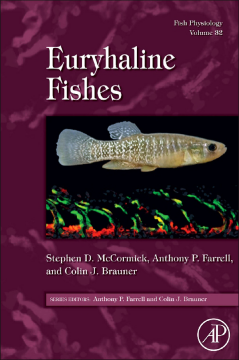
BOOK
Fish Physiology: Euryhaline Fishes
Stephen D. McCormick | Anthony Peter Farrell | Colin J. Brauner
(2013)
Additional Information
Book Details
Abstract
The need for ion and water homeostasis is common to all life. For fish, ion and water homeostasis is an especially important challenge because they live in direct contact with water and because of the large variation in the salt content of natural waters (varying by over 5 orders of magnitude). Most fish are stenohaline and are unable to move between freshwater and seawater. Remarkably, some fishes are capable of life in both freshwater and seawater. These euryhaline fishes constitute an estimated 3 to 5% of all fish species. Euryhaline fishes represent some of the most iconic and interesting of all fish species, from salmon and sturgeon that make epic migrations to intertidal mudskippers that contend with daily salinity changes. With the advent of global climate change and increasing sea levels, understanding the environmental physiology of euryhaline species is critical for environmental management and any mitigative measures. This volume will provide the first integrative review of euryhalinity in fish. There is no other book that focuses on fish that have the capacity to move between freshwater and seawater. The different challenges of salt and water balance in different habitats have led to different physiological controls and regulation, which heretofore has not been reviewed in a single volume.
- Collects and synthesizes the literature covering the state of knowledge of the physiology of euryhaline fish
- Provides the foundational information needed for researchers from a variety of fields, including fish physiology, conservation and evolutionary biology, genomics, ecology, ecotoxicology, and comparative physiology
- All authors are the leading researchers and emerging leaders in their fields
"...I found the book very worthwhile reading and have learned a great deal from it."--The Quarterly Review of Biology, Euryhaline Fishes
"...especially useful to research scientists interested in ion and water homeostasis and veterinarians involved with aquaculture or fisheries who are interested in wild and cultured euryhaline fishes."--Journal of the American Veterinary Medical Association, December 15, 2014
